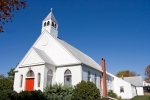July 15, 2011
Redesigning your Website
Sometimes it’s hard to let go of what I want.
As the creator and keeper of the diocesan website, I want the cool, flashy stuff to be out front.
In the communications survey that I talked about earlier this week, I also asked responders to weigh in on the content they use most from the diocesan website. The daily Advent calendar with windows that opened each day to new stories of mission and outreach didn’t make the top 10. Neither did the carefully constructed pages with information about the history of the diocese and our beliefs and traditions in the Episcopal Church.
The top reason to visit the diocesan website? The calendar. Then, the directory of congregations, clergy and lay leaders. They also visited for online registrations and forms. In the middle of the list fell the items that consume most of my time, such as information and stories about the various ministries.
In short, the respondents went to the website for practical news they can use.
We’re undergoing a major site re-design and hope to launch next week. I’ve had to let go of some of my pre-conceived notions about what people should get from the site and listen to what they need. Links to the calendar, directory and forms are front and center. An A to Z directory and site map should help with navigation and help people locate information more quickly – especially in the first few days of the new structure.
At the same time, I still have to weigh the in-house information with an evangelism component. For church websites, there is always a balancing act because there are two distinct audiences: current members and possible visitors. Our Google analytics show that of the 14,000 or so unique visitors each month, 75 percent are first-timers. I can’t tell how many of those are Episcopalians already, but I think it’s another clear indicator that people are using the web when they’re searching for a church – or for some guidance in their spiritual journey.
Keeping this dual audience in mind, there’s a section for newcomers that talks about what to expect if you visit an Episcopal church. It gives a spot to ask questions, learn about our crazy terminology and find a nearby church.
In all of the work leading up to the redesigned site, I had to put aside my own preferences and consider carefully what users want and need. I used some hard data to drive the decisions as well as some softer, more anecdotal information culled from frequent users and way tech-savvy friends.
And I’ll watch the Google analytics over the next few months to see if the new site is achieving its goals. Are more people visiting? Is the rate of return visitors increasing? Are people staying on the site longer, going deeper into the content?
And maybe after meeting the needs of current and possible Episcopalians, I can go back and sneak in some fancy stuff.





